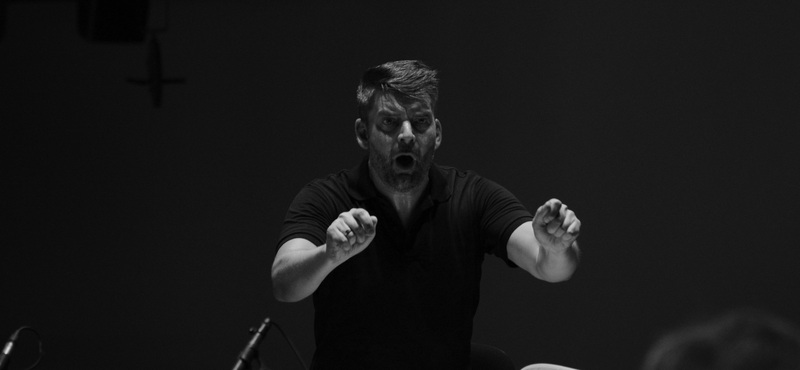Tout français (presque)

In his introductory remarks for Thursday’s National Symphony Orchestra concert at the Kennedy Center, music director Gianandrea Noseda said last week’s theme was Vienna and this week’s is France. But though his name does not appear in the program, it was a Hungarian, Franz Liszt, to whom the three selections owed the most. From the cinematic tone-painting of César Franck’s Le Chasseur maudit to the glittering keyboard virtuosity of the Ravel Concerto in G to the cyclic transformation of themes throughout the Saint-Saëns Symphony No. 3, it was an evening of unspoken homage to Liszt’s many innovations. That, along with the French motif, gave a nice frame around a debut by a graceful and elegant young artist, the introduction of a true novelty (the Franck), and the infectious intensity Noseda brings to every performance.
We think of the tone-poem as belonging to turn-of-the-century names like Strauss, Sibelius, and Elgar. But they were not innovators; already by 1850, Liszt was composing musical works on literary or legendary themes, their forms dictated by the scenario in question and owing nothing to the symphonic structures that had prevailed for a century. Franck’s essay in this genre, Le Chasseur maudit was completely new to me, and a delight. It depicts a huntsman who sinned against God and his community by going out hunting on the Sabbath, and comes to a bad end for it as demons attack him. Victorian silliness, yes; but Noseda had the braying horns, the scurrying strings, and the menacing low woodwinds in a frenzy at times, and the underlying themes were bracing and well-turned.
The Ravel concerto is a relatively slight work, but in the hands of a master pianist and strong collaborator it ranges from jazzy fun to ethereal yearning. Seong-Jin Cho, winner of the 2015 Chopin competition and now a DG recording artist, looked for and found many new colors in the piece. He gave rhythmic clarity to some of the low, growling passages I’d never heard before. His trills were nacreous and magical. With no physical mannerisms or mooning, he phrased the opening “blues” solo dreamily and romantically; best of all, he avoided the delayed-right-hand affectation that so many pianists put on in the Adagio. And through it all, he played the piece like chamber music, listening and collaborating. The concerto is a virtuoso piece for orchestra as well, and the NSO principal winds all came through with profile and character, Cho following their lead. He was perhaps a little tame in the manic, Stravinskian riffs in the finale, and his encore (Debussy’s La fille aux cheveux de lin) was prosaic rather than emotional. But he achieved the most important thing for a debut; a wish to hear him again.
The Saint-Saëns is a true warhorse, whose final triumphant pages can attain the volume of a rock concert, guaranteeing a big ovation. Everyone makes much of the startling inclusion of an organ here, so much so that the piece is popularly subtitled the “Organ Symphony,” but just as unique for its time is the use of a piano, which had never appeared in a symphony before. So the piece was a true novelty for its time, and its hummable tunes, easy-to-follow counterpoint, and a bracing scherzo movement (some of Saint-Saëns’s finest inspiration) all keep the piece in heavy rotation. The symphony sort of plays itself, there’s not a lot beneath the surface for this or that conductor to mine. Noseda did elicit some lovely pianissimo playing from the orchestra, keeping the sound alive while not losing tempo. The ensemble wasn’t perfect in the first slip-slidey theme, but admirably tight in the scherzo. It is hard to impart a sense of sustained musical line in the Poco Adagio – the dullest section of the piece – though the strings did try. And once the organ kicks in in the finale, the orchestra members can kind of relax and go along for the ride. So a good, generous time was had by all, the large house giving Noseda & Co. a rousing thanks. These are good times for the NSO.
The program will be given again this morning at 11:30, and tomorrow night at 8:00. Tickets and info here.





